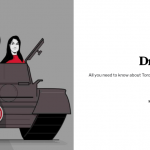Algorithm reporting: Is it a matter of ‘if’ or ‘when?’
Instead of reporters, computers are now writing news stories on local sports, finance and crime in the United States. Angelina Irinici says that while algorithm reporting isn't nearly as popular in Canadian publications yet, she's still nervous about losing out to a robot when it comes to getting her first real journalism job.
It seems that there is some new gadget for everything these days, all promising to make our lives increasingly easier. (You know, “there’s an app for that.”)
Technology taking over human jobs is not a new occurrence (Think: factory assembly-line workers, grocery store cashiers’ friendly smiles and ‘do you need bags?’ being replaced by a computer reminding you to take your receipt and change.) But now in journalism, instead of a newbie reporter writing a story littered with numbers about finance, crime or sports, readers might see the byline ‘by Narrative Science.’ Narrative Science is not a reporter; it’s not even a newbie, fresh-out-of-j-school-reporter. It is essentially a robot that uses algorithms to turn numbers into narratives.
Has it really come this far? Forget the economy, lack of jobs and budget cuts. As a fourth-year journalism student, am I going to lose out to a robot when it comes to finding my first real journalism job?
Launched in 2010, Narrative Science is a product of research conducted at Northwestern University and aims to turn data into easy-to-read stories. It works best for sports, finance and crime reporting, as these beats use the most numbers. The company, of course, provides but one example of software that uses algorithms to produce news stories but so far, it has 35 paying clients. Check out an example of the software’s work in a story about The New York Times’ earnings on Forbes.com.
Narrative Science’s chief technology officer (and Northwestern journalism instructor) Kris Hammond told J-Source in an email that the technology works very similar to that of a human because it uses the same “analysis and tone” that journalists use to create stories. This is accomplished by writers and journalists who configure the system to fit certain tones and language, Hammond said.
“We write stories at a scale that is not possible either in terms of resources, costs or logistics that no organization would ever produce,” Hammond said.
In an April 2012 feature for Wired, Hammond went even further, telling writer Steven Levy that computers will be winning Pulitzers in five years and writing 90 per cent of news stories in 15.
Last week, Kris Hammond spoke to radio host Jian Ghomeshi of CBC Radio’s Q. When asked by Ghomeshi if he was just being cheeky about the Pulitzer comment he said “not at all.”
He says the reality is that Narrative Science’s work is based on extracting insight from huge masses of data, and that’s where the journalists will lose out.
“The notion that [Narrative Science] will be able to write a story that a human being can’t get to simply because of the sheer volume of data and the intensity of the analysis is completely conceivable.”
If Hammond is right, a Pulitzer winner in the near future will be a story with tons of data, and even if that doesn’t happen in the next five years, he says it will eventually. He told Ghomeshi that he was not backing off from the claim.
“If I am wrong, I’m wrong about the timing.”
Maybe they won’t be winning the Pulitzers but there’s a chance they could be helping journalists get there by working together. As Levy wrote in the Wired feature:
Maybe at some point, humans and algorithms will collaborate, with each partner playing to its strength. Computers, with their flawless memories and ability to access data, might act as legmen to human writers. Or vice versa, human reporters might interview subjects and pick up stray details—and then send them to a computer that writes it all up
If there is a robot handling the meticulous stories with data and numbers, then reporters’ time is freed up to chase deeper, more interesting and meaningful stories or digging for the nuanced details that computers may miss.
[node:ad]J-Source contacted a number of reporters and editors from Canadian publications who work on the beats that algorithm reporting is being used for. When they did respond, the common answer was that they were not familiar enough with the issue to comment.
Jon Filson, sports editor at the Toronto Star, did comment but he doesn’t see a use for algorithms — not yet, anyway. “I think it’s a bit early to be talking about the effect algorithms will have on news reporting as the technology is still in its infancy.”
If objectivity is still valued above all else in journalism (see: Jay Rosen’s “View from Nowhere” argument), then the inherent lack of bias in computer-produced news could be a good thing. A robot could never be left or right-wing. The robot would never provide its opinions. But is this lack of humanity always a good thing?
Ben Welsh is a database producer at the Los Angeles Times. He gave a talk about computer assisted reporting at the International Symposium on Online Journalism in April 2012. (Embedded below.)
He showed how the LA Times uses algorithms to write crime stories. In its Homicide Report, an algorithm automatically generates the first graph of a story that documents each homicide in the city. From there, a reporter takes over, adding details.
Taken at its most literal level for the victim’s friends and family, this means that a computer is writing the first draft of a loved one’s death.
Issues such as that aside, Welsh says that the concept of computer-assisted reporting isn’t new. In fact, it’s decades old. And he wants to get journalists thinking differently about it.
“My joke always is, is that everyone is computer-assisted now. Photographs, architects, pretty much any job you need to do, you use a computer. But you don’t call it a computer-assisted architect,” he said at ISOJ. “It’s only in journalism that we continue to distinguish ourselves by the use of Microsoft Excel.”
It seems likely that technology will only get smarter, faster and — dare I say — more human-like with time. Already, you can read books off of a screen, video chat through a cell phone and with robot vacuum cleaners, you don’t even need to lift a finger (unless you count pressing the ‘on’ button). Perhaps the same thing is happening in journalism — maybe technology is just helping us better meet our needs?
“Watson can answer questions, Siri can understand your needs and Narrative Science can write stories. That all of these systems work is simply a reflection of our deeper understanding of how people do the things they do,” Hammond said.
In Simon Houpt’s piece in The Globe and Mail on news delivered by algorithms from last month, he tells fellow journalists to take a deep breath and realize that the “development is just another part of a painful process that is transforming journalism from a trade that traffics information to one that helps in the development of knowledge.”
I’ve taken a deep breath — but I’ve yet to exhale.
(Here’s Ben Welsh’s ISOJ talk, as promised.)
Angelina King is a freelance journalist who works as a reporter for CTV News Channel in Toronto. She previously reported for CTV in her hometown of Saskatoon and is a graduate of Ryerson University's journalism program. Angelina has a special interest in court and justice reporting, but is always grateful to share a human interest story. You can reach her at: @angelinakCTV.




